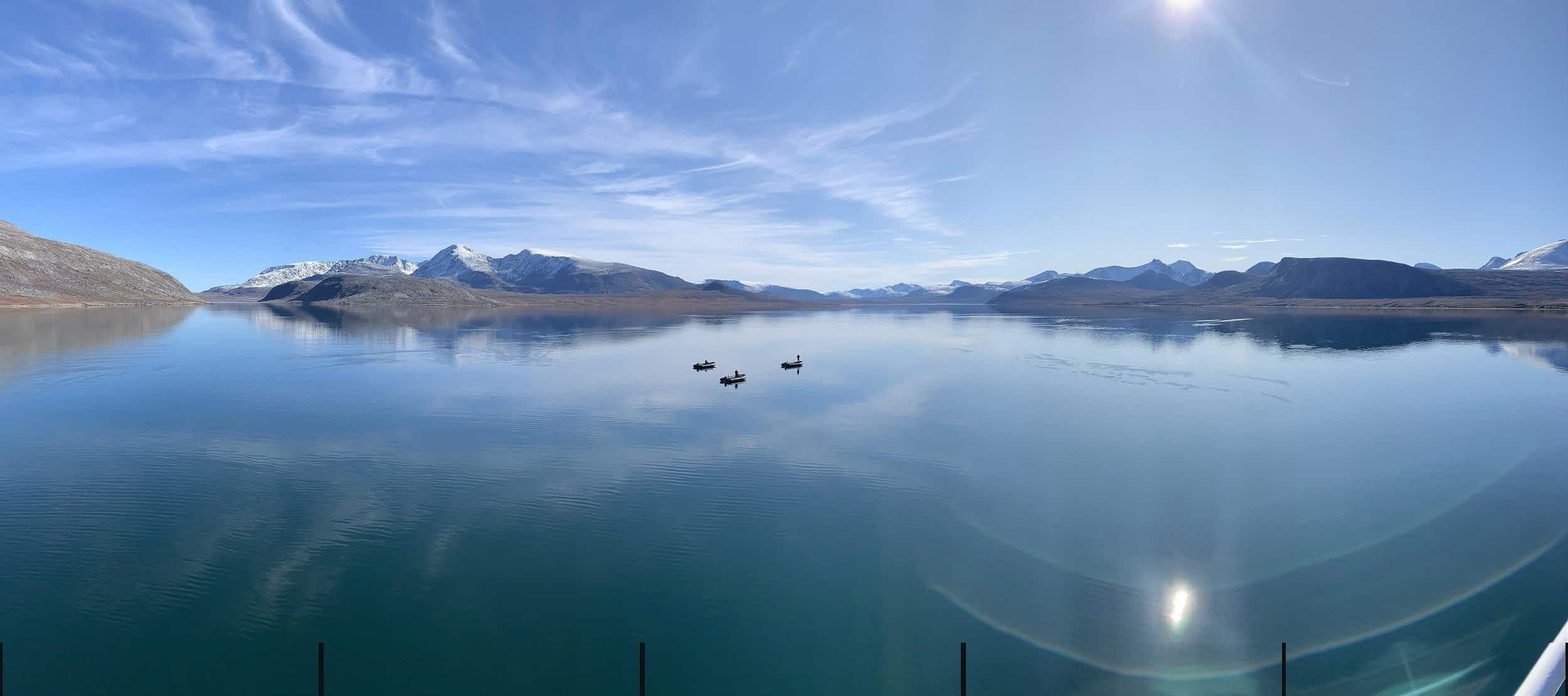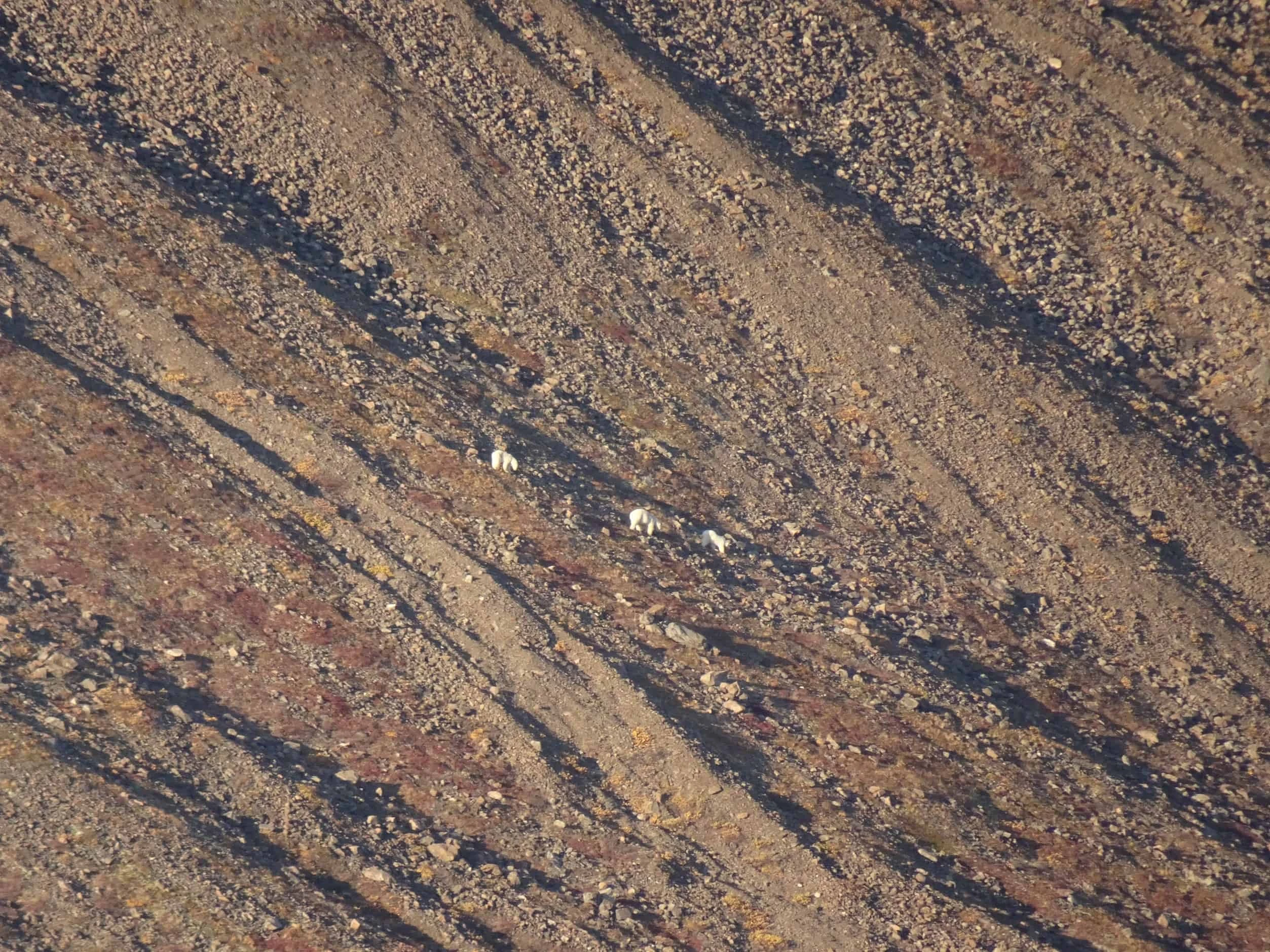Hiking Through the Remote, Northern Torngat Mountains National Park, Newfoundland and Labrador

The view in front of me has a spectacular coastline, and when I turn around, the steep and rugged Torngat Mountains in their beautiful fall colours both dwarf and inspire me.
We often fly to other parts of the world seeking beauty, other cultures and traditions and to meet people with different backgrounds. I found all those elements right in our own country on a trip to the Torngat Mountains National Park. It was my last trip before Covid-19.
I was on a small expedition ship with Adventure Canada, spending part of the trip travelling down the eastern coastline of Labrador, with daily hikes exploring the different areas within the national park. Inuit guides and interpreters shared their love of the country and culture with us.
You can’t enter the park without a bear monitor. Adventure Canada has access to the Torngat Mountains because of the Indigenous locals working as staff on board that double as bear patrols because of the high number of polar and black bears.

Conversations with the Inuit bear monitors guiding are filled with the history of the park mixed with Inuit history. The strong lure to travel to the Torngats are the low numbers of visitors every year as its only accessible five weeks out of the year, with less than 600 people visiting annually compared to Banff National Park with 4.09 million. The weather changed to clear blue skies with sunshine as we approached the Torngat Mountains. The name comes from the Inuktitut word Tongait, meaning “place of spirits.” Once I started hiking through it, the mystical, sacred and magical parts of it were as crystal clear as the icebergs. The park has been called “the lost corner of Labrador” as it’s so inaccessible physically.
We anchored and took zodiacs to a small landing site in Ramah. Heavy rain cleared and the sun, along with a full rainbow behind the mountains, highlighted the same spectrum of fall colors in the tundra blanketing the hills. Mountains sculpted by glacial ice lured hikers high up in the hills, while others lingered near waterfalls next to caves.
I traversed a tricky wide stream, one booted foot in the cold water and one to plonk onto the next rock, and repeat. I wanted to get to the other side to see the relics of Inuit life from hundreds of years ago, including fragments of homes and pieces of stoves set in the wilderness. Talking to our Inuit guide, Derek, he told us that the longest solo hunting trip he had taken in winter was 66 days. I love being on this land, but it’s the people that are making it a rich experience.

As we hiked, I chatted to our Inuit guides about their background and the traditions they are bringing back to daily life including tattoos on wrists, ankles and arms, representing the mountains we hiked through, the water, caribou and hunting spears. After hiking, we continued our chats onboard, our hands warming around mugs of tea, their hands beautifully adorned with traditional tattoos, mine bare, not wearing my history but wishing I were.
Sharing pieces of their backgrounds set the tone for the journey. We were encouraged to ask questions and to abandon pre-existing ideas. It can be difficult to talk about culture, which requires a lot of honesty and openness on both sides. Reconciliation was openly discussed throughout the voyage. Learning more about Inuit culture and traditions became a focus of my journey in miles and personally.
Hiking onto a beach in Nachvak Fjord gave us a chance to hike around the deep fjord. Our hiking group was scattered on the beach when our guide spotted three polar bears on the far side of the fjord. Two of the bears started swimming close to our protected zone. The guide quickly gathered us together and urged us to move quickly to board waiting zodiacs. Hiking any day through the Torngats, we had to be prepared to change course because of wildlife or bad weather, all adding to the enjoyment and adrenalin.

A favourite stand-out, purely magical day was at Eclipse Sound. We spent a sunny morning hiking where multi-hued colours were highlighted in the dense growth. Rivers, waterfalls, frequent wildlife sightings, rainbows during the day and northern lights at night helped me to understand the reason the area is the spiritual home of Inuit. Seals were spotted, caribou swam offshore and, once again, we saw polar bears. I remember feeling like I was part of a movie set because it was such a record-breaking memorable day. How did I not know how beautiful northern Labrador was?
The day we anchored near St. John’s Harbour, part of the Torngat Mountains base camp, we set out in three different hiking groups: extreme, ridge hike and a waterfall hike. I was part of the last group. After hearing so much about base camp, it was interesting to finally see the camp of permanent buildings with plastic igloo-shaped domes to stay in. The domes are the only place to stay in unless you are staying on an expedition ship anchored nearby.

Beyond base camp, colorful tundra and cascading waterfalls were surrounded by multi-textured rock formations making an incredible backdrop to our hike. Seeing the bear monitors with rifles strapped to their backs nearby kept it realistic. The monitors kept looking for bear scat on the trails and broken branches. We couldn’t stray from the trails because of the lurking dangers and had to be respectful. After all, we were in a natural environment encroaching on the bears territory—they weren’t in ours. Offshore, we spotted minke whale spouts. The area felt so remote, I had to remind myself that I was still in Canada.
Every day was such a gift to see so much beautiful scenery and wildlife while forming new connections. I was sad to leave so much behind, but I knew I would keep in touch with many of the people I met along the way.

Background information: Torngat Mountains National Park is at the most northern tip of Labrador, on an Inuit-run reserve. Running along the border with Quebec on the west side and the Labrador Sea on the east, the park is huge at 6,237 miles, and it’s not easy to get to. In the summer, visitors can take a plane north from the town of Happy Valley-Goose Bay in central Labrador or visit by ship which visits once a year.
Disclaimer: Melody was hosted by Adventure Canada. The article was neither approved nor reviewed by them. Explore was not affiliated with this press trip.
For more information, visit Adventure Canada.















